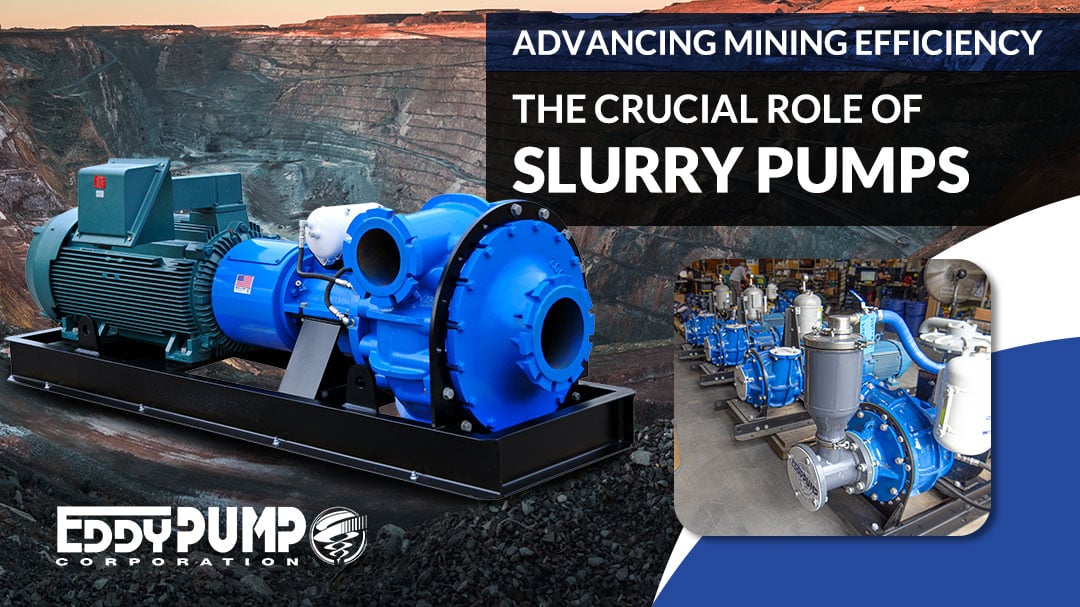
Slurry pumps are vital in the mining industry, serving as essential equipment for efficiently transporting abrasive and corrosive slurries. Their primary function is to move large volumes of abrasive materials, such as ore, coal, tailings, and other mining by-products, from one place to another within a mining operation. This introduction provides a detailed overview of slurry pumps in the context of the mining industry, covering their purpose, types, components, applications, and importance.
Purpose of Slurry Pumps in Mining:
Sludge pumps are designed to handle abrasive and corrosive materials encountered in mining operations. They are crucial for transporting slurries from mining processes such as crushing, grinding, flotation, and tailings disposal. Efficiently moving these slurries facilitates mining operations’ overall productivity and profitability.
Types of Slurry Pumps:
Slurry pumps come in various types, each suitable for specific applications within the mining industry. Some common types include:
- Centrifugal Slurry Pumps: These pumps use centrifugal force to propel the slurry through the pump casing and discharge it through the outlet. They are the most widely used type in mining due to their high efficiency and robust design.
- Submersible Slurry Pumps: Designed to operate underwater, these pumps are suitable for applications where the slurry needs to be pumped from deep locations such as sumps or pits.
- Vertical Slurry Pumps: These pumps have a vertical design, with the motor above the pump. They are often used in applications with limited space or installations where the pump must be submerged in the slurry.
- Horizontal Slurry Pumps: These pumps are horizontal and suitable for various mining applications, including mill discharge, cyclone feed, and tailings transfer.
Components of Slurry Pumps:
Slurry pumps consist of several vital components, including:
- Impeller: The rotating component imparts centrifugal force to the slurry, facilitating its movement through the pump.
- Casing: The outer shell of the pump that contains the impeller and directs the flow of the slurry.
- Shaft: Transfers the rotational motion from the motor to the impeller.
- Wear Parts: Components such as liners, throatbushes, and impeller vanes are designed to withstand abrasion and prolong the pump’s service life.
Applications in the Mining Industry:
Slurry pumps are used across various sectors within the mining industry due to their ability to handle abrasive and corrosive materials efficiently. Here is a list of mining industries where these pumps find widespread application:
- Ore and Mineral Processing: Slurry pumps are used extensively in ore and mineral processing plants to transport slurries during crushing, grinding, flotation, and other beneficiation processes.
- Tailings Management: Slurry pumps are essential for pumping tailings from mineral processing plants to tailings ponds or disposal sites for storage and management.
- Dewatering: In mining operations, especially underground mining and open-pit mining, slurry pumps are utilized for dewatering purposes to remove excess water from mine shafts, tunnels, and excavations.
- Coal Mining: Slurry pumps play a critical role in coal mining operations, particularly in coal washing plants, where they handle coal slurries during washing and separation.
- Sand and Gravel Mining: Slurry pumps transport slurries containing sand, gravel, and other aggregates from extraction sites to processing facilities in sand and gravel mining operations.
- Pipeline Transportation: Slurry pumps pump slurries through pipelines in mining operations where long-distance transportation of materials, such as ore concentrates or tailings, is required.
- Hydraulic Mining: In hydraulic mining operations, slurry pumps transport high-pressure water and mining slurries to dislodge and transport materials from the mining site to processing plants or sedimentation ponds.
- Phosphate Mining: Slurry pumps are commonly employed in phosphate mining operations to transport phosphate-containing slurries from mining pits to beneficiation plants.
- Copper Mining: Slurry pumps play a crucial role in copper mining operations, facilitating the transport of copper ore slurries during various processing stages, including crushing, grinding, flotation, and tailings disposal.
- Gold Mining: In gold mining operations, slurry pumps transport gold-bearing ores and tailings during the extraction, processing, and disposal.
- Diamond Mining: Slurry pumps transport diamond-bearing ores and slurries from mining pits to processing plants for extraction and recovery in diamond mining operations.
- Iron Ore Mining: Slurry pumps are integral to iron ore mining operations. They transport iron ore slurries during processing, including crushing, grinding, and concentration stages.
Future Trends and Innovations:
As the mining industry evolves, driven by technological advancements and heightened environmental awareness, these pumps continue to undergo innovation. Integrating digitalization and IoT technologies enables real-time monitoring and optimization of pump performance, thereby minimizing downtime and enhancing operational efficiency.
Advancements in materials science and manufacturing techniques facilitate the development of next-generation pumps with improved wear resistance and reduced environmental footprint. Composite materials and additive manufacturing techniques promise to enhance pump performance while mitigating energy consumption and emissions.
.
Conclusion:
Slurry pumps represent a paradigm shift in the mining industry, offering efficient and reliable solutions for handling abrasive slurries. Their robust construction, versatility, and environmental sustainability make them indispensable for optimizing mining operations and ensuring long-term profitability. As technology progresses, these pumps will continue to play a pivotal role in driving innovation and sustainability across the mining sector. With ongoing research and development, the future of pumps holds immense promise for further enhancing efficiency, reducing environmental impact, and advancing sustainable mining practices.
